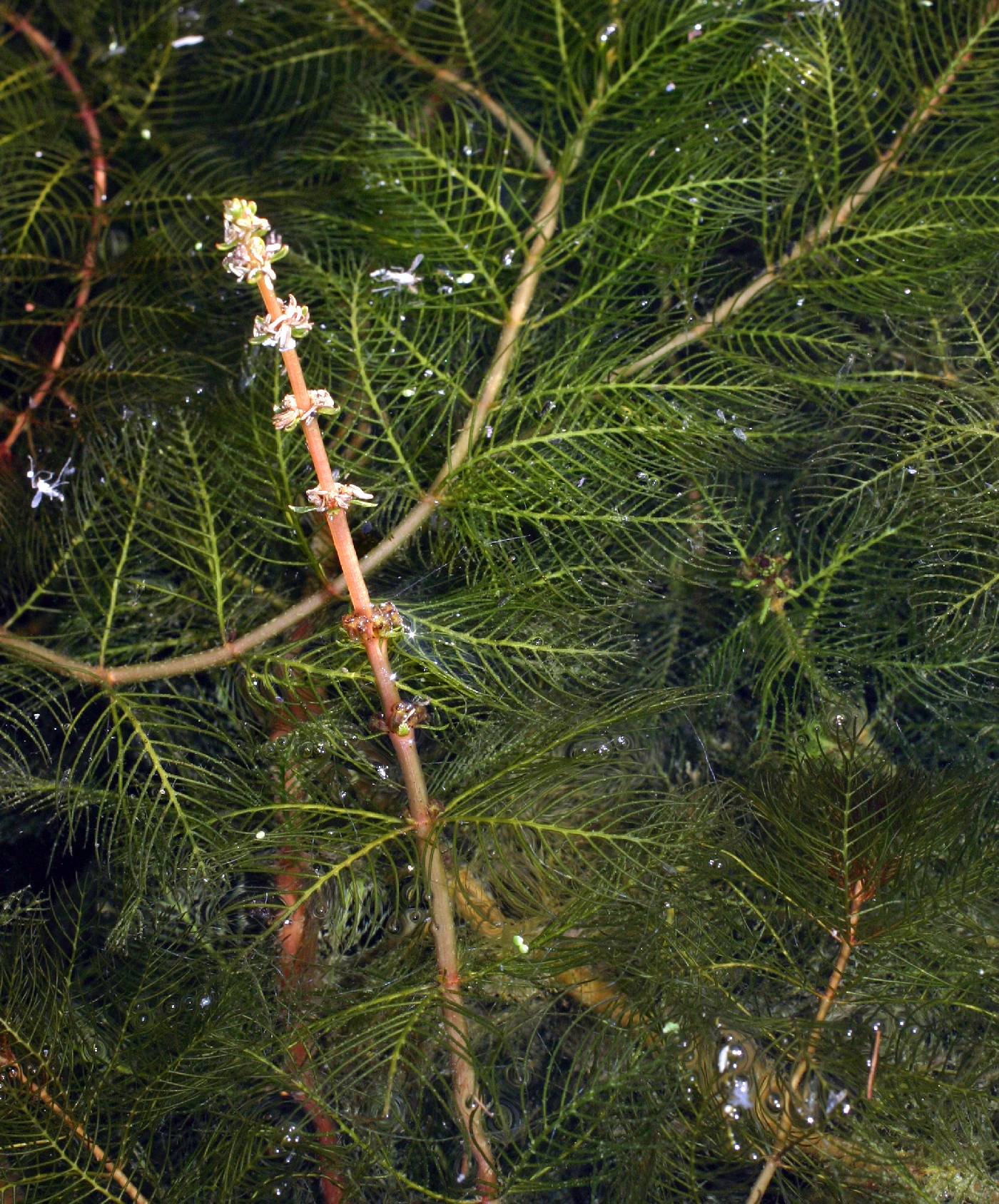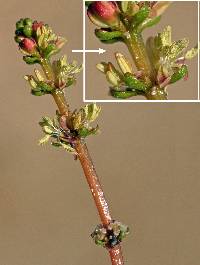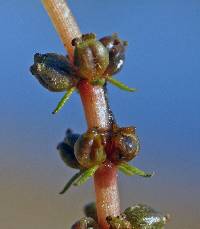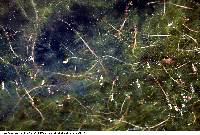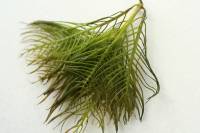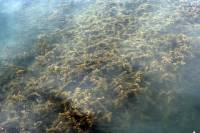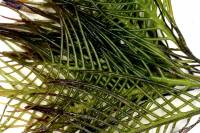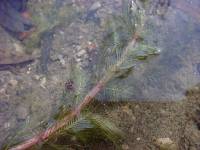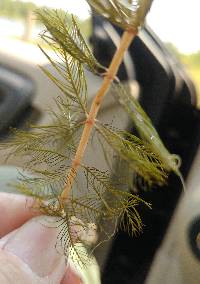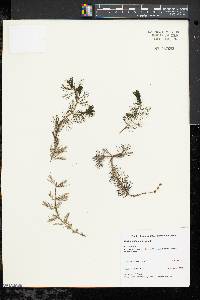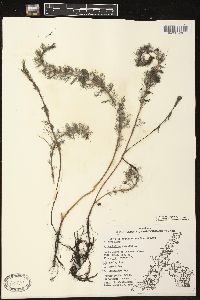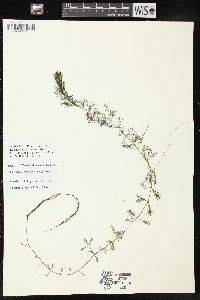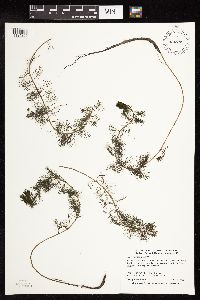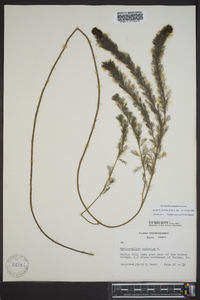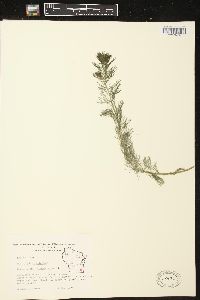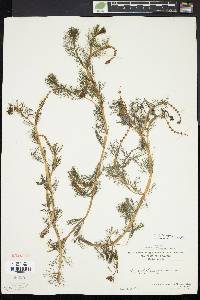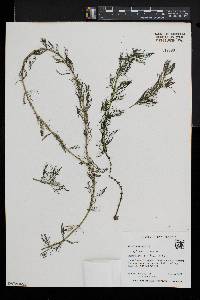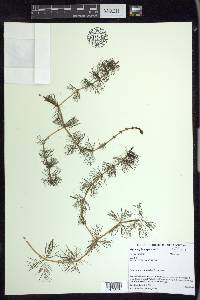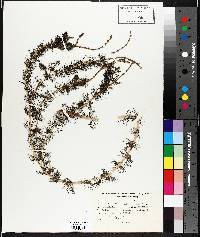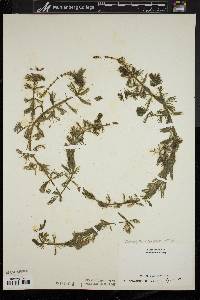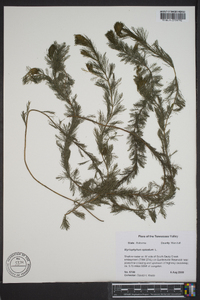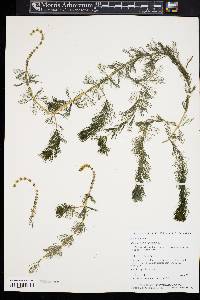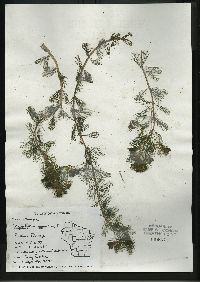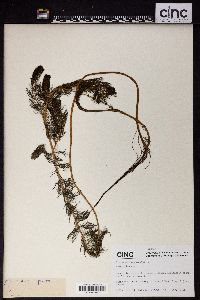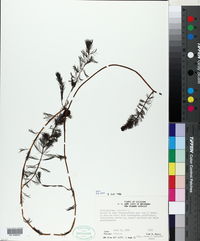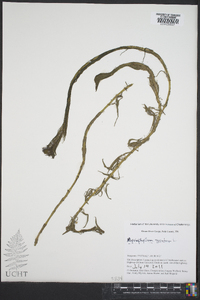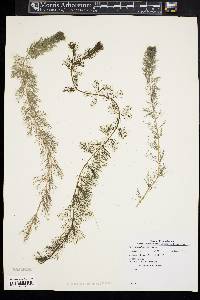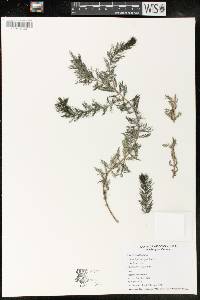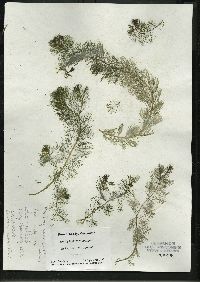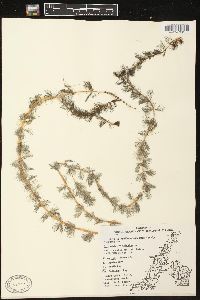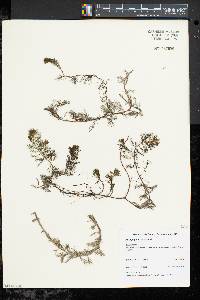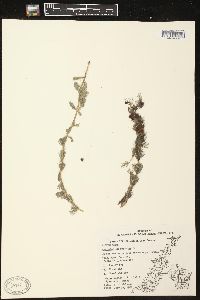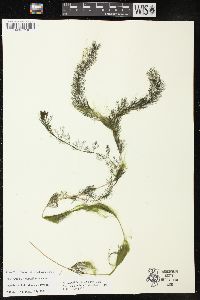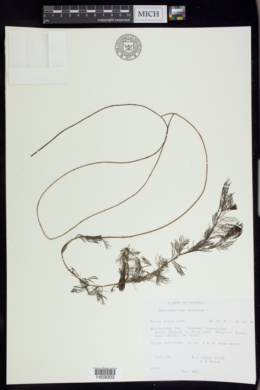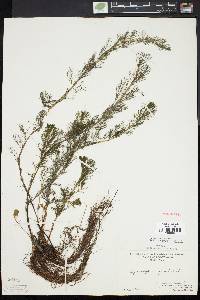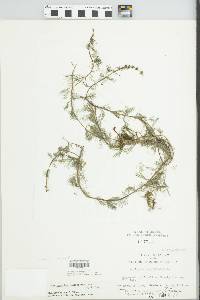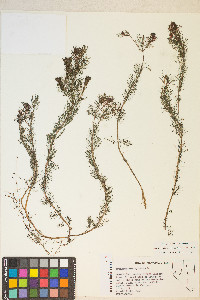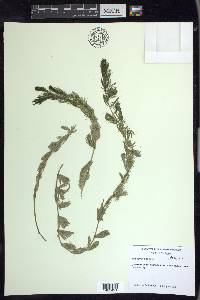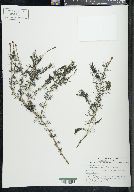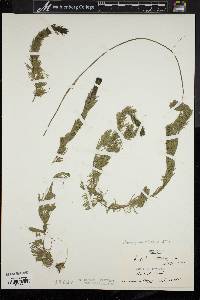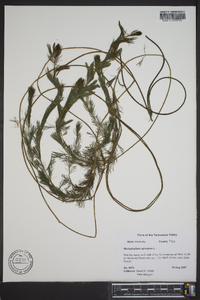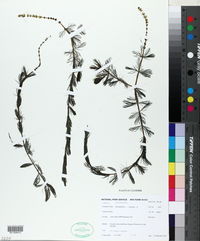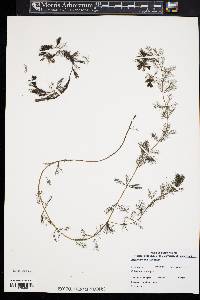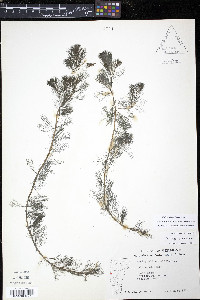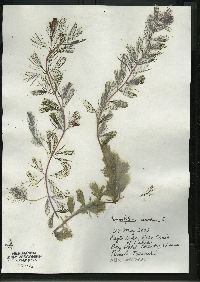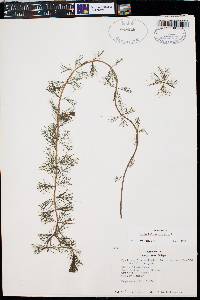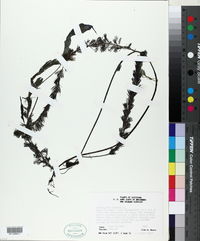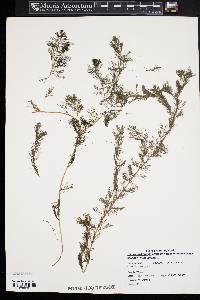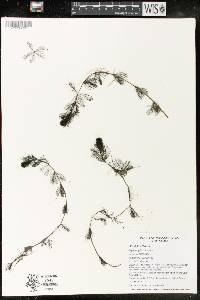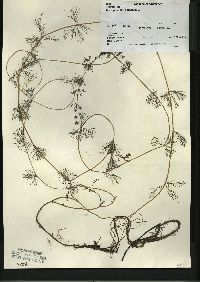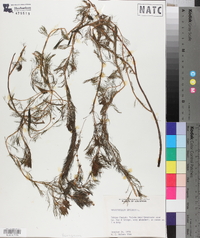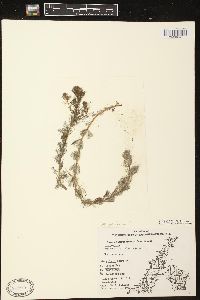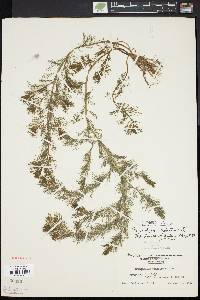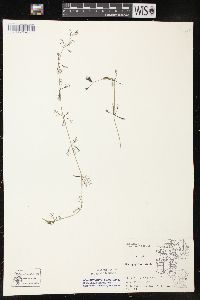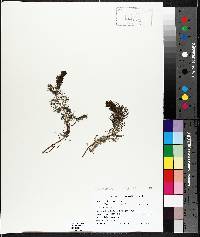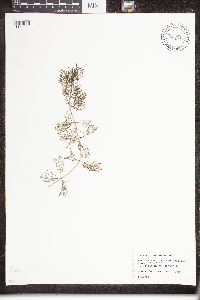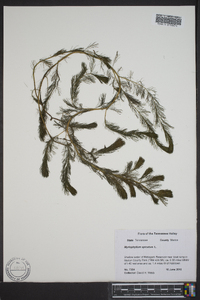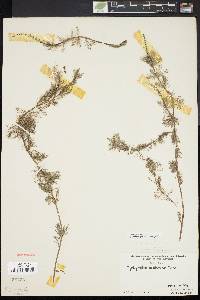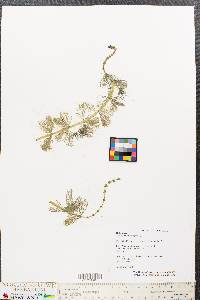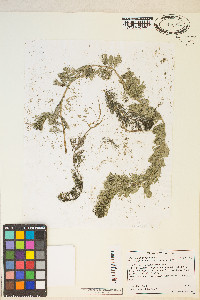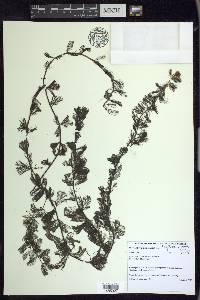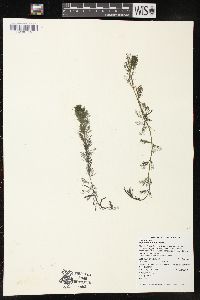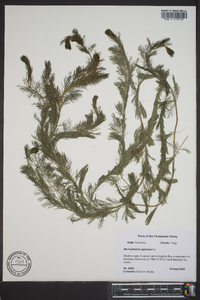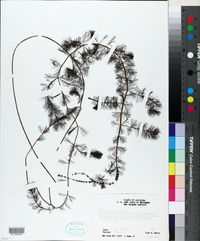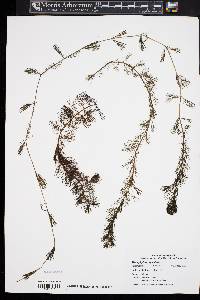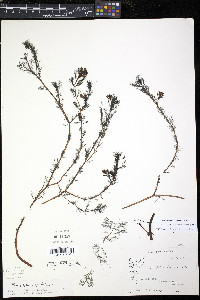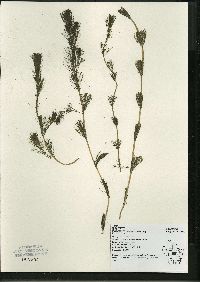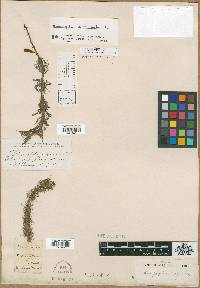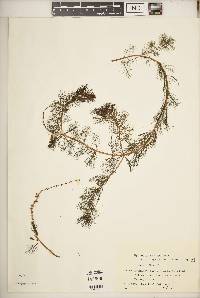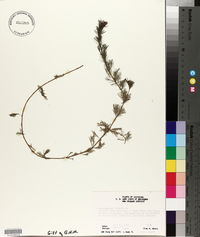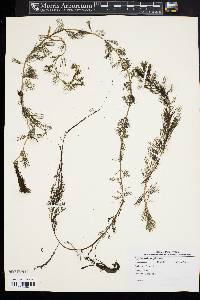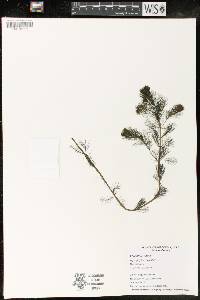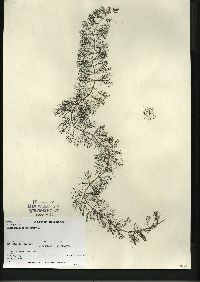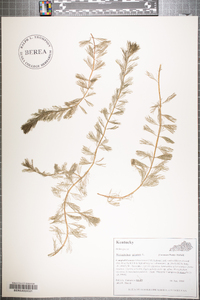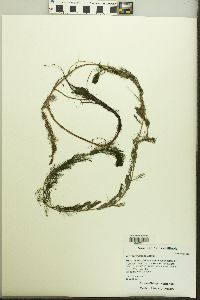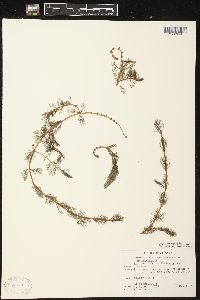Myriophyllum spicatum
|
|
|
|
Family: Haloragaceae
Eurasian Water-Milfoil, more...Eurasian water milfoil, spike watermilfoil, spiked water milfoil, Eurasian watermilfoil
[Myriophyllum spicatum var. spicatum] |
Perennial aquatic herb 0.9 - 3 m long (up to 10 m) Stem: mostly submersed, diameter just below inflorescence twice as wide as diameter at base, internodes 1 - 3 cm long. The stem usually branches near the water surface to form an interlaced mat and curves to lie flat on the water surface. Leaves: in whorls of four or five, pinnately divided with twelve to twenty mostly straight segments per side, uppermost leaves often squared at the tips. Out of water, the leaves become limp. Flowers: either male or female, found on the same plant (monoecious), borne in a terminal spike (5 - 10 cm long) above the water surface, with male flowers near the inflorescence tip. The upper bracts do not extend past the flowers, but the lower bracts are often longer than the flowers and have comb-like divisions. Flowers green, small, four-parted, with eight stamens on male flowers. Fruit: a deeply four-lobed nut-like cluster, 2 - 3 mm long, nearly spherical, separating into four segments. Winter buds: absent. Similar species: Myriophyllum sibiricum differs by having winter buds, stems that rarely branch near the water surface and do not interlace, rounded tips on its upper leaves, eleven or fewer pairs of divisions per leaf, an equal stem diameter from base to just below the inflorescence, and leaves remaining rigid out of water. Myriophyllum pinnatum is easy to distinguish by having both alternate and whorled leaves. Myriophyllum verticillatum has pinnately divided bracts that are longer than the flowers and well-formed winter buds growing along the stem. Myriophyllum heterophyllum has male flowers with four stamens, bracts that are longer than the flowers, and winter buds arising from the stem base or rhizome. Flowering: late July to early October Habitat and ecology: An invasive species usually found in lake water 0.9 - 3.6 m deep. It can dominate disturbed areas polluted with nitrogen and phosphorous run-off. Occurence in the Chicago region: non-native Notes: This non-native species has been invading our lakes since around 1970. It grows quickly in spring and takes over areas by blocking the sunlight from native plants. These areas have fewer larger fish, and some other fish are unable to spawn, disrupting the lake's ecosystem. In addition, water fowl are unable to find nutrient-rich native plants to eat. Myriophyllum spicatum spreads by fragments breaking off to produce new plants. Boaters should make sure all vegetation is removed from boats and trailers to prevent the transport of this species from one lake to another. Etymology: Myriophyllum comes from the Greek words, myrios, meaning many, and phyllon, meaning leaf, referring to its highly divided leaves. Spicatum means "in spikes." Author: The Morton Arboretum Godfrey and Wooten 1979, DiTomaso and Healy 2003 Duration: Perennial Nativity: Non-Native Lifeform: Forb/Herb General: Noxious perennial with slender submersed stems to 4 m long, commonly much branched from rhizomes, emersed only when flowering branching at water surface, stems red-tinged, forming large colonies. Leaves: Grayish green glabrous, those submerged 4 per node, all whorled, usually with 28 or more filiform segments, first leaves opposite becoming alternate, but the segments emerging from axis in pairs. Flowers: Terminal spike, 4-8 cm, emergent, usually with minute emersed bract-like leaves 1-3 mm beneath unisexual flowers, these with 4 sepals and petals, monoecious, pinkish, upper flowers male, lower female. Fruits: Stems bend to nearly horizontal as fruits mature, 4-lobed, subglobose and somewhat tuberculate, 2-3 mm long. Ecology: Found in wide range of aquatic habitats, including alkaline, brackish to pure cool springs, forming dense stands; flowers June-September. Notes: Similar to M. sibiricum and can be difficult to distinguish between them, although that species usually has less than 26 leaf segments, where this species usually has more; additionally, this species has the spike that goes horizontal in fruit. Ethnobotany: Rhizomes were eaten. Etymology: Myriophyllum comes from Greek myrios for numberless, and phyllon for leaf, while spicatum means with flowers in spikes. Synonyms: None Editor: SBuckley, 2010 Much like no. 9 [Myriophyllum sibiricum Kom.]; stem thickened below the infl to almost double its width farther down, curved to lie parallel with the water-surface, usually branching freely near the water-level; shoot-tip more tassel-like, with internodes mostly 1-3 cm; no turions; lvs with more numerous (mostly 12-20) long, straight segments per side; lower bracts often pectinate and often somewhat exceeding the frs; mericarps 2-3 mm; 2n=42. European sp., widely intr. in N. Amer., tolerant of nitrogenous pollution. Gleason, Henry A. & Cronquist, Arthur J. 1991. Manual of vascular plants of northeastern United States and adjacent Canada. lxxv + 910 pp. ©The New York Botanical Garden. All rights reserved. Used by permission. From Flora of Indiana (1940) by Charles C. Deam Indiana Coefficient of Conservatism: C = null, non-native Wetland Indicator Status: OBL |
|
|
|

